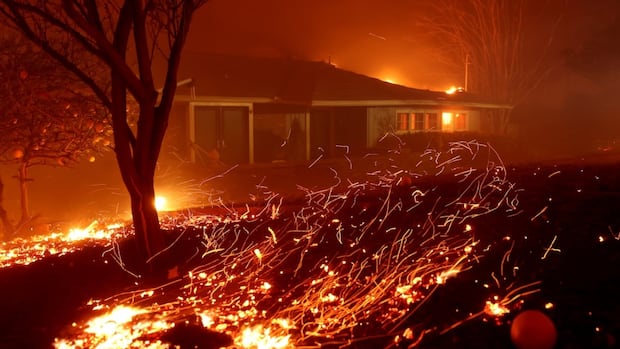Useful information
Prime News delivers timely, accurate news and insights on global events, politics, business, and technology
Useful information
Prime News delivers timely, accurate news and insights on global events, politics, business, and technology

Deadly and destructive wildfires are raging through the Los Angeles area, with high winds literally fanning the flames.
As of Wednesday afternoon, four fast-moving fires had killed two people, injured many and destroyed more than 1,000 structures, while threatening 28,000 more and forcing the evacuation of at least 70,000 people.
Here’s how winds are making wildfires more dangerous and harder to fight.
The Santa Ana winds are strong winds that blow from dry inland areas toward the coast, usually in the colder months, for a few days to a week.
The National Weather Service says Santa Ana winds reached 129 km/h in some areas around Los Angeles early Wednesday, and could exceed 160 km/h in the mountains and foothills.
Wind gusts of up to 95 km/h are expected through Thursday, Los Angeles County firefighters said Wednesday.
Those winds come from dry desert regions of Nevada, Utah, Idaho and southeastern Oregon, and they get even drier as they move down the mountains.
Peter Mullinax, a meteorologist at the weather service office in College Park, Maryland, called what the region is experiencing “extremely critical fire weather conditions,” due to a combination of strong wind gusts in the higher terrain and humid conditions. extremely low.
The Mountain Fire, which started earlier this week in Ventura County, California, has grown to more than 30 square miles and prompted evacuation orders for about 10,000 people.
The faster the winds, the faster the fire will spread. The general rule used by forest firefighters is that fires spread at 10 percent of wind speed. For example, a wind speed of 25 km/h would allow a fire to spread at 2.5 km/h.
There are a few reasons for this.
Lindon Pronto, a senior fire management expert at the European Fire Institute, said the Santa Ana winds’ ability to dry vegetation to its lowest moisture content of the year is one of its “really dangerous effects.”
“The fuel itself becomes extremely available to the fire and can catch fire and spread very quickly,” he told Reuters.
This compounds the increased fire risk and worse fire conditions already caused by climate change.
Sylvia Dee, an assistant professor and climate scientist at Rice University in Houston, said climate change has created warmer, drier conditions overall in the region, “and that creates a bit of a tinderbox.”
As of midday Wednesday, 1,400 firefighters had been deployed on the ground, but aerial efforts were hampered by the fact that it was too windy for firefighting planes to fly, The Associated Press reported.
Winds can create turbulence, especially in mountainous terrain, or even damage airplanes if they are too strong.